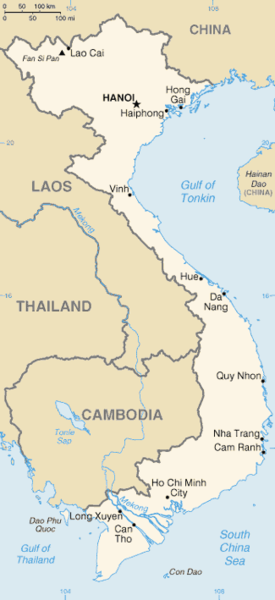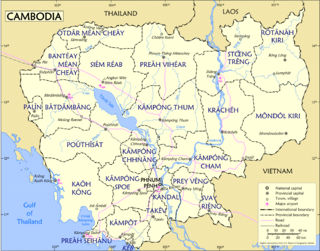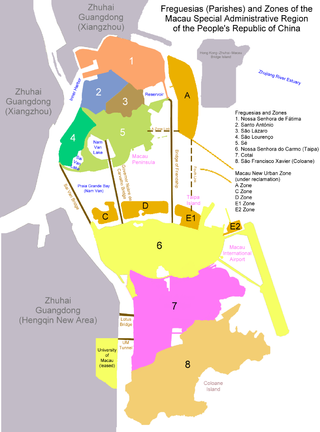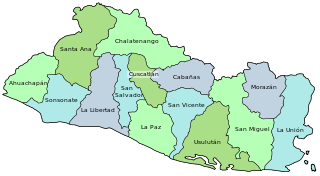Related Research Articles

Commercial Sexual Exploitation of Children (CSEC) defines the “umbrella” of crimes and activities that involve inflicting sexual abuse on to a child as a financial or personal opportunity. Commercial Sexual Exploitation consists of forcing a child into prostitution, sex trafficking, early marriage, child sex tourism and any other venture of exploiting children into sexual activities. According to the Office of Juvenile Justice and Delinquency Prevention, the lack of reporting the crime and “the difficulties associated with identifying and measuring victims and perpetrators” has made it almost impossible to create a national estimate of the prevalence of Commercial Sexual Exploitation of Children in the United States. There is an estimated one million children that are exploited for commercial sex globally; of the one million children that are exploited, the majority are girls.

Sex trafficking is human trafficking for the purpose of sexual exploitation. It has been called a form of modern slavery because of the way victims are forced into sexual acts non-consensually, in a form of sexual slavery. Perpetrators of the crime are called sex traffickers or pimps—people who manipulate victims to engage in various forms of commercial sex with paying customers. Sex traffickers use force, fraud, and coercion as they recruit, transport, and provide their victims as prostitutes. Sometimes victims are brought into a situation of dependency on their trafficker(s), financially or emotionally. Every aspect of sex trafficking is considered a crime, from acquisition to transportation and exploitation of victims. This includes any sexual exploitation of adults or minors, including child sex tourism (CST) and domestic minor sex trafficking (DMST).

International Justice Mission is an international, non-governmental 501(c)(3) organization focused on human rights, law and law enforcement. Founded in 1997 by lawyer Gary Haugen of the United States, it is based in Washington, D.C. All IJM employees are required to be practicing Christians; 94% are nationals of the countries they work in.

Human trafficking and the prostitution of children has been a significant issue in the Philippines, often controlled by organized crime syndicates. Human trafficking is a crime against humanity.
Vietnam is primarily a source country for women and children trafficked for commercial sexual exploitation and forced labor. Women and children are trafficked to the People’s Republic of China (P.R.C), Cambodia, Thailand, the Republic of Korea, Malaysia, Taiwan, and Macau for sexual exploitation. Vietnamese women are trafficked to the P.R.C., Taiwan, and the Republic of Korea via fraudulent or misrepresented marriages for commercial exploitation or forced labor. Vietnam is also a source country for men and women who migrate willingly and legally for work in the construction, fishing, or manufacturing sectors in Malaysia, Taiwan, P.R.C., Thailand, and the Middle East but subsequently face conditions of forced labor or debt bondage. Vietnam is a destination country for Cambodian children trafficked to urban centers for forced labor or commercial sexual exploitation. Vietnam has an internal trafficking problem with women and children from rural areas trafficked to urban centers for commercial sexual exploitation and forced labor. Vietnam is increasingly a destination for child sex tourism, with perpetrators from Japan, the Republic of Korea, the P.R.C., Taiwan, the UK, Australia, Europe, and the U.S. In 2007, an Australian non-governmental organization (NGO) uncovered 80 cases of commercial sexual exploitation of children by foreign tourists in the Sa Pa tourist area of Vietnam alone.

Human trafficking is the trade of humans for the purpose of forced labour, sexual slavery, or commercial sexual exploitation.
Sex trafficking in Thailand is human trafficking for the purpose of sexual exploitation and slavery that occurs in the Kingdom of Thailand. Thailand is a country of origin, destination, and transit for sex trafficking. The sexual exploitation of children in Thailand is a problem. In Thailand, close to 40,000 children under the age of 16 are believed to be in the sex trade, working in clubs, bars, and brothels.
Sex trafficking in China is human trafficking for the purpose of sexual exploitation and slavery that occurs in the People's Republic of China. It is a country of origin, destination, and transit for sexually trafficked persons.

Sexual slavery in China is sexual exploitation and slavery that occurs in the People's Republic of China.
Sex trafficking in Myanmar is human trafficking for the purpose of sexual exploitation and slavery that occurs in the Republic of the Union of Myanmar. Myanmar is primarily a source and transit country for sexually trafficked persons.

Sex trafficking in Vietnam is human trafficking for the purpose of sexual exploitation and slavery that occurs in the Socialist Republic of Vietnam. Vietnam is a source and, to a lesser extent, destination country for sexually trafficked persons.

Sex trafficking in Cambodia is human trafficking for the purpose of sexual exploitation and slavery that occurs in the Kingdom of Cambodia. Cambodia is a country of origin, destination and transit for sex trafficked persons.

Sex trafficking in Hong Kong is human trafficking for the purpose of sexual exploitation and slavery that occurs in Hong Kong. Hong Kong is a city of origin, destination, and transit for sexually trafficked persons.

Sex trafficking in Macau is human trafficking for the purpose of sexual exploitation and slavery that occurs in the Macao Special Administrative Region of the People's Republic of China. Macau is predominantly a destination country for sexually trafficked persons.
Sex trafficking in Japan is human trafficking for the purpose of sexual exploitation and slavery that occurs in the country. Japan is a country of origin, destination, and transit for sexually trafficked persons.

Sex trafficking in South Korea is human trafficking for the purpose of sexual exploitation and slavery that occurs in the Republic of Korea. South Korea is a country of origin, destination, and transit for sexually trafficked persons. Sex trafficking victims in the country are from South Korea and foreigners.

Sex trafficking in Taiwan is human trafficking for the purpose of sexual exploitation and slavery that occurs in the Taiwan, which is a country of origin, destination, and transit for sexually trafficked persons.

Sex trafficking in Mongolia is human trafficking for the purpose of sexual exploitation and slavery that occurs in the country. Mongolia is a source, transit and destination country for sexually trafficked persons.
Cybersex trafficking, live streaming sexual abuse, webcam sex tourism/abuse or ICTs -facilitated sexual exploitation is a cybercrime involving sex trafficking and the live streaming of coerced sexual acts and/or rape on webcam.

Sex trafficking in El Salvador is human trafficking for the purpose of sexual exploitation and slavery that occurs in the Republic of El Salvador. It is a country of origin, transit, and destination for sexually trafficked persons.
References
- ↑ "Philippines 2018 Trafficking in Persons Report". U.S. Department of State. Archived from the original on July 30, 2018. Retrieved July 30, 2018.
As reported over the past five years, the Philippines is a source country and, to a lesser extent, a destination and transit country for men, women, and children subjected to sex trafficking and forced labor.
- ↑ "New ways to help Hong Kong's human trafficking victims". CN Monitor. October 22, 2015.
- 1 2 3 "Philippines meets 'minimum standards' in eliminating human trafficking — US report". PhilStar Global. June 22, 2019.
- 1 2 3 4 5 6 7 8 9 10 11 12 13 "Philippines' fight against trafficking". CNN Philippines. September 23, 2016. Archived from the original on December 24, 2019. Retrieved April 16, 2020.
- 1 2 "SEA Games: foreign tourist surge to Philippines sees rising risk of sex trafficking". South China Morning Post. December 10, 2019.
- 1 2 3 4 5 "Human trafficking prevalent in post-typhoon Philippines". Devex. January 2, 2014.
- 1 2 3 4 5 "Victims of human trafficking in PH spike to over 700,000 – Global Slavery Index". UNTV. December 6, 2018.
- 1 2 3 4 5 6 "Victims endure lives degraded by traffickers". CNN. May 16, 2013.
- 1 2 3 "Facebook used to kidnap girls for sex slaves". Standard-Examiner. October 29, 2012. Archived from the original on July 29, 2020. Retrieved April 16, 2020.
- 1 2 3 "Philippines targets cybersex trafficking but young victims are often left in limbo". South China Morning Post. May 6, 2019.
- 1 2 3 "UN envoy warns about human trafficking in PH". Rappler. November 9, 2012.
- ↑ "3 minors rescued from human traffickers in Bulacan". Rappler. June 23, 2013.
- 1 2 3 "Cyber-sex trafficking: A 21st century scourge". CNN. July 18, 2013.
- 1 2 3 "Saving child sex workers". Rappler. December 29, 2019.
- ↑ "Senator warns of possible surge in child cybersex traffic". The Philippine Star. April 13, 2020.
- ↑ "Global taskforce tackles cybersex child trafficking in the Philippines". Reuters. April 15, 2019.
- ↑ "12 minors rescued in Butuan City cybersex den". SunStar. May 22, 2020. Archived from the original on June 9, 2020. Retrieved May 31, 2020.
- ↑ "'We didn't have much to eat': Poverty pushes some kids towards paid sex abuse in the Philippines". CNA. July 9, 2019.
- ↑ "USFK video links 'juicy bars' with human trafficking". Stars and Stripes. December 20, 2012. Archived from the original on March 26, 2021. Retrieved April 27, 2020.
- ↑ "Seoul: Filipinas forced into sex trade with foreigners and US soldiers". Asia News. January 1, 2009.
- ↑ "USFK: Troops cannot pay for the companionship of "juicy girls"". Military Times. October 30, 2014.
- ↑ "Destiny Rescue International". Destiny Rescue. 2023.
- ↑ "IJM Seeks to End Cybersex Trafficking of Children and #RestartFreedom this Cyber Monday and Giving Tuesday". PR Newswire. November 28, 2016.
- ↑ "Child sex abuse live streams rising at 'alarming rate' amid surge in 'cybersex trafficking'". The Independent. November 16, 2017.